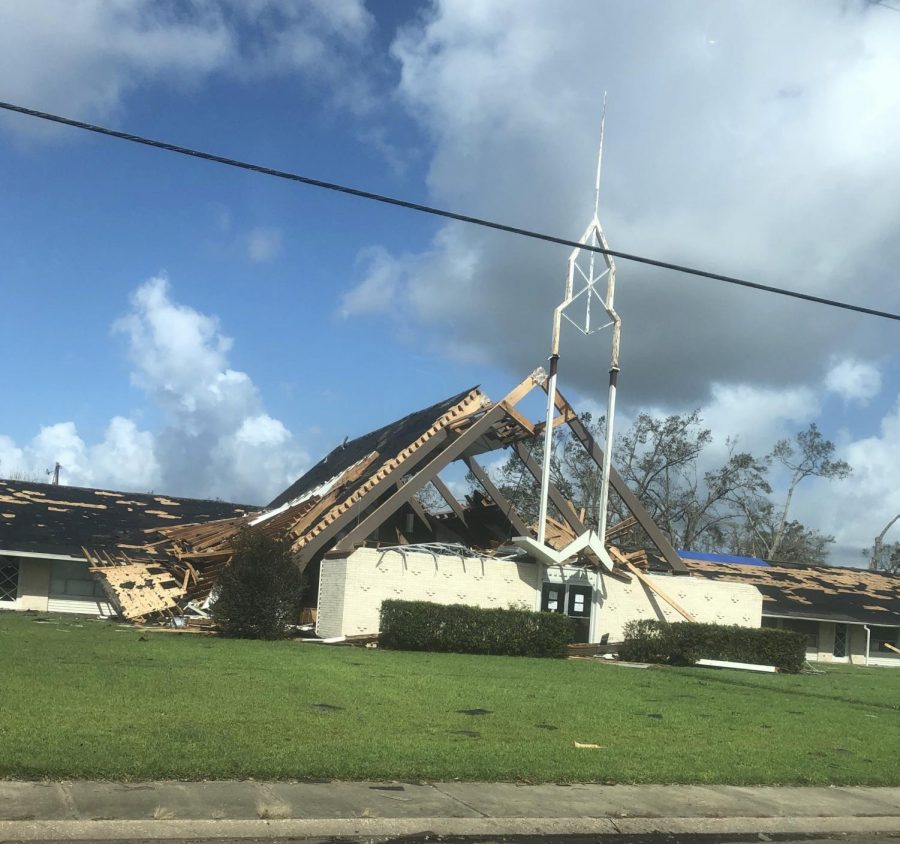Marginalized communities are paying steeper price for Hurricane Laura
On Aug. 27, Hurricane Laura made landfall in Louisiana. Since then, irreversible damage has been done to affected communities primarily in southwest Louisiana and southeast Texas. Although Laura largely missed New Orleans and spared much of the surrounding area from the damage, there is no doubt that this kind of disaster is reminiscent of Hurricane Katrina. Much like Katrina, the damage inflicted is shaped by pervasive societal structures.
A huge aspect of the impact that Hurricane Laura has had on affected communities is the intersection of the storm damage with the preexisting COVID-19 concerns in the United States. For example, Calcasieu Parish had one of the highest prevalence rates of coronavirus cases, and it is also among the areas most deeply affected by Hurricane Laura. Lake Charles, the Calcasieu Parish seat, is also a predominantly non-white city, with a 48% Black population. Seeing how Black people are more severely impacted and die at higher rates from COVID-19 than white people, Hurricane Laura will likely have disastrous impacts in terms of coronavirus-related casualties for impacted communities.
“I think COVID is really going to skyrocket right now,” student Maggie Rowland, a Lake Charles resident, said. “They’re [Lake Charles citizens] already more together because people don’t have houses to isolate in. Already they don’t care about masks; nobody is wearing masks. Can’t take a shower, so they’re unable to sanitize properly.”
The impact of climate change on natural disasters such as Laura cannot be denied, either. Hurricanes and other hazardous natural events have and will continue to become much more common as the climate crisis continues. Ultimately, the structural conditions we live in, such as a lack of public transportation, increased reliance on technology, and a consumerist culture paired with corporations that help create them, have steadily pushed fossil fuel usage and pollution up. This resulted in conditions that allow these disasters to happen. Despite the “natural” event of Hurricane Laura causing the damage, the environment for Laura was crafted artificially. The facilities impacted by Laura include damages to water and electricity, with six to eight weeks of deprivation in Lake Charles being predicted at the moment. The lack of access to these utilities inevitably exposes members of these communities to the elements and leaves many houseless and unable to access jobs and educational facilities.
As with many other natural disasters, the material needs of the affected communities are not effectively addressed. Lower-income communities are more likely to have homes that are physically unstable or deteriorated. Trailer parks in Lake Charles, for example, are decimated, Rowland said, and families without the means to leave are heavily stunted in their recovery.
While recovery for affected areas is inevitably going to be a slow process, some sources of relief are already picking up.
“A lot of outside volunteer groups are trying to come in, and Lake Charles as a community had always been good about taking care of itself,” student Noah LeJeune said.
Those interested in helping impacted communities should consider donating items or money to the Cajun Navy Relief and Rescue, the Community Foundation of Southwest Louisiana or other relief organizations.
Your donation will support the student journalists of Tulane University. Your contribution will allow us to purchase equipment and cover our annual website hosting costs.



